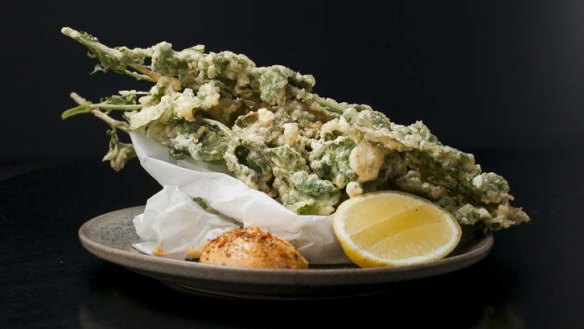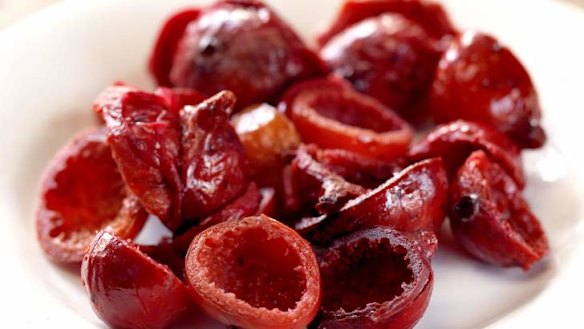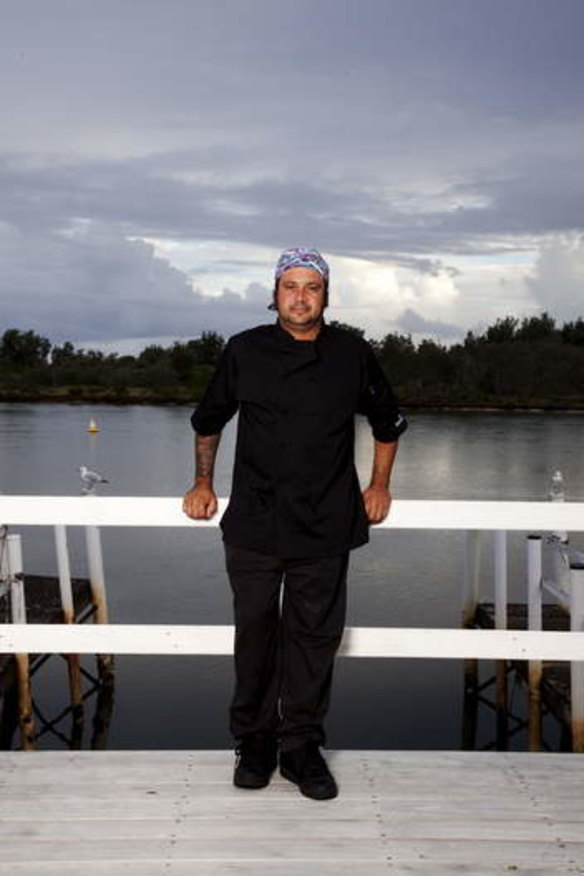Native produce the original superfoods
People could learn a lot about nutrition from the indigenous Australian diet, writes Carla Grossetti.

Australian food scientist Vic Cherikoff says eating traditional Aboriginal and Torres Strait Islander foods connects a dish to the land and gives it meaning and context.
Of greater significance, he says, is the fact that many of these native foods contain superior antioxidant capacity and offer a host of other health benefits.
Cherikoff is a passionate purveyor of wild foods with a forthcoming book entitled Australian Wild Foods, Looking Back 60,000 Years for Clues to our Future Survival.

He believes the world has much to learn about nutrition from the indigenous Australian diet.
''Hunter-gatherers ate better quality foods and a greater selection of them. Most fruits and vegetables we eat are picked unripe, stored chilled for up to six months, gas-ripened as needed and slowly released to supermarkets as required,'' says Cherikoff, who has spent the past three decades working at getting wild food dishes on the menu in Australian homes.
''Ingredients such as wattleseed [which he first developed as a food flavouring in the 1980s], lemon myrtle, riberry and quandong are potential flagships of a future Australian cuisine that is rooted in the past,'' Cherikoff says.

He says it is beneficial to eat Australian wild foods because they contain antioxidants, anti-inflammatories, enzyme regulators, micro-sugars and other micro-nutrients, ''the functionality of which are new to modern nutritional science''.
He describes wild Australian foods as the original superfoods and the reason Australia is home to the world's longest-living culture.
''Aborigines utilised up to 700 different foods, depending on where they lived. They picked nutrient-dense fruits and vegetables at their peak ripeness, found sugarbag (wild honey) from native bees and a sweet syrup from honey ants. They harvested foods that yielded complex carbohydrates and fibre and huge levels of antioxidants, anti-inflammatories and other micro-nutrients that all provided a protective role against diabetes and a myriad other modern diseases of poor nutrition," he says.
Indigenous chef Clayton Donovan agrees that sourcing food from the Australian bush ''is like shopping in the health aisle of an enormous supermarket''.
Once or twice a week, the 40-year-old heads into the sub-tropical rainforest around Nambucca Heads to collect lemon myrtle, lilli-pilli berries and appleberries.
He cuts footlong branches from the black wattle tree to extract its sap for his onion relish and digs up wild carrots to accompany a macadamia nut chicken dish on his menu.
''When I started cooking 20 years ago, I always said, 'native foods will be sexy one day'. What I didn't realise is that sourcing native foods would become a major food trend around the world for both health and sustainability reasons,'' says Donovan, who hosts pop-up Jaaning Tree dinners around northern NSW.
''Eating seasonally and sustainably is about more than just respecting the land. Eating locally sourced native ingredients when they are at their best means they deliver the highest possible dose of minerals and nutrients, too,'' Donovan says.
As well as borrowing from ancient Gumbaynggirr Country traditions, Donovan uses techniques that echo the training he received when he was an apprentice at Watermark restaurant in Sydney's Balmoral.
Donovan, who is host of Wild Kitchen, on ABC TV, regards it as a ''tribute to my culture'' to see superstar chefs such as Ben Shewry, of Melbourne's award-winning Attica restaurant, celebrating indigenous Australian ingredients.
''The act of using native ingredients keeps the knowledge of how to forage for wild foods alive,'' he says.
"'Bush tucker' used to be seen as a lesser product. Now its image has been elevated around the world and it provides a frame of reference for an ancient culture that is distinctly Australian,'' Donovan says.
InterContinental Sydney executive chef Tamas Pamer agrees foraging is not a fad, rather a philosophy. He and executive sous chef Julien Pouteau recently returned from a jaunt to the South Coast where they rummaged around for the samphire, pig face and shellfish that will feature on their upcoming Foraged Feasting menu.
Pamer says the Foraged Feasting tasting menu, on offer from from July 14 to August 17, aims to inspire diners to experiment with wild food with contemporary pairings such as confit maroon crayfish with salt-baked celeriac, truffle and wattleseed and pan-seared scallops with truffle, Jerusalem artichokes, rice cracker, horseradish and samphire and hay-smoked Tajima beef fillet with fern shoots, parsley root and mustard seed.
Wild foods - what are they good for?
Lemon myrtle Citral is what gives lemons, lemongrass and lemon verbena their lemony aromatic quality. Lemon myrtle's citral content is much higher than these sources. Vic Cherikoff, of Australia's Functional Ingredients, says many performing touring artists ''from the Rolling Stones to Madonna'', have used his lemon myrtle sprinkle to soothe their throats.
Pepperberry The leaves and berries are anti-microbial. Ian Hemphill, of Herbie's Spices, says 19th-century colonists were thought to make use of its bark, as a liniment. There is now a lot of culinary interest in the flavour components of pepperberry.
Saltbush Saltbush has a flavour a little like thyme and parsley. Hemphill suggests adding saltbush to savoury foods such as soups, casseroles and roasts.
Mountain pepper This plant has a long history of use as a culinary herb. In Super Foods for Super Health, Cherikoff says related polyogonum species are renowned for their anti-arthritic activity. He says other research suggests the polygodial plays a protective role for the lining of the stomach and is anti-asthmatic, anti-allergic and anti-inflammatory.
Wild Rosella Cherikoff says wild rosella contains compounds that appear to have a relaxant effect on muscles, such as the vascular system. This suggests a role in normalising blood pressure.
Kakadu plum Known as the world's highest fruit source of vitamin C, the Kakadu plum also contains significant absorptive enhancers such as iron and folates, which improve the absorption of the Vitamin C.
Wattleseed Many Aboriginal clans utilised the nutritional benefits of steamed or milled wattleseeds for thousands of years, eating the seeds and gum from some species and also using the bark for medicinal reasons. Its coffee, chocolate and hazelnut flavours make it perfect for dairy desserts.
Quandong Research by Cherikoff and others suggests this fruit is a rich source of minerals, including calcium and potassium. It ranks as the second- highest antioxidant fruit measured so far (second only to the kakadu plum).
A wide range of native herbs and spices are available from Australian Functional Ingredients (Cherikoff.net) and Herbie's Spices (herbies.com.au).
The best recipes from Australia's leading chefs straight to your inbox.
Sign up